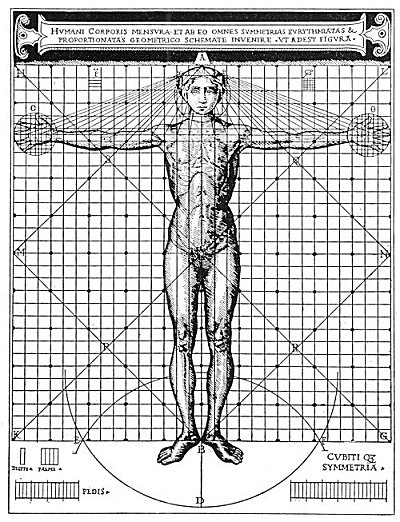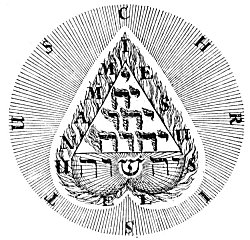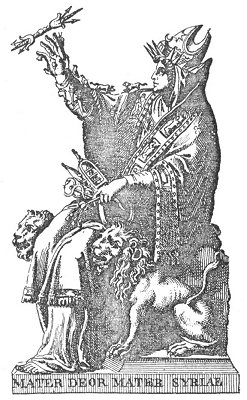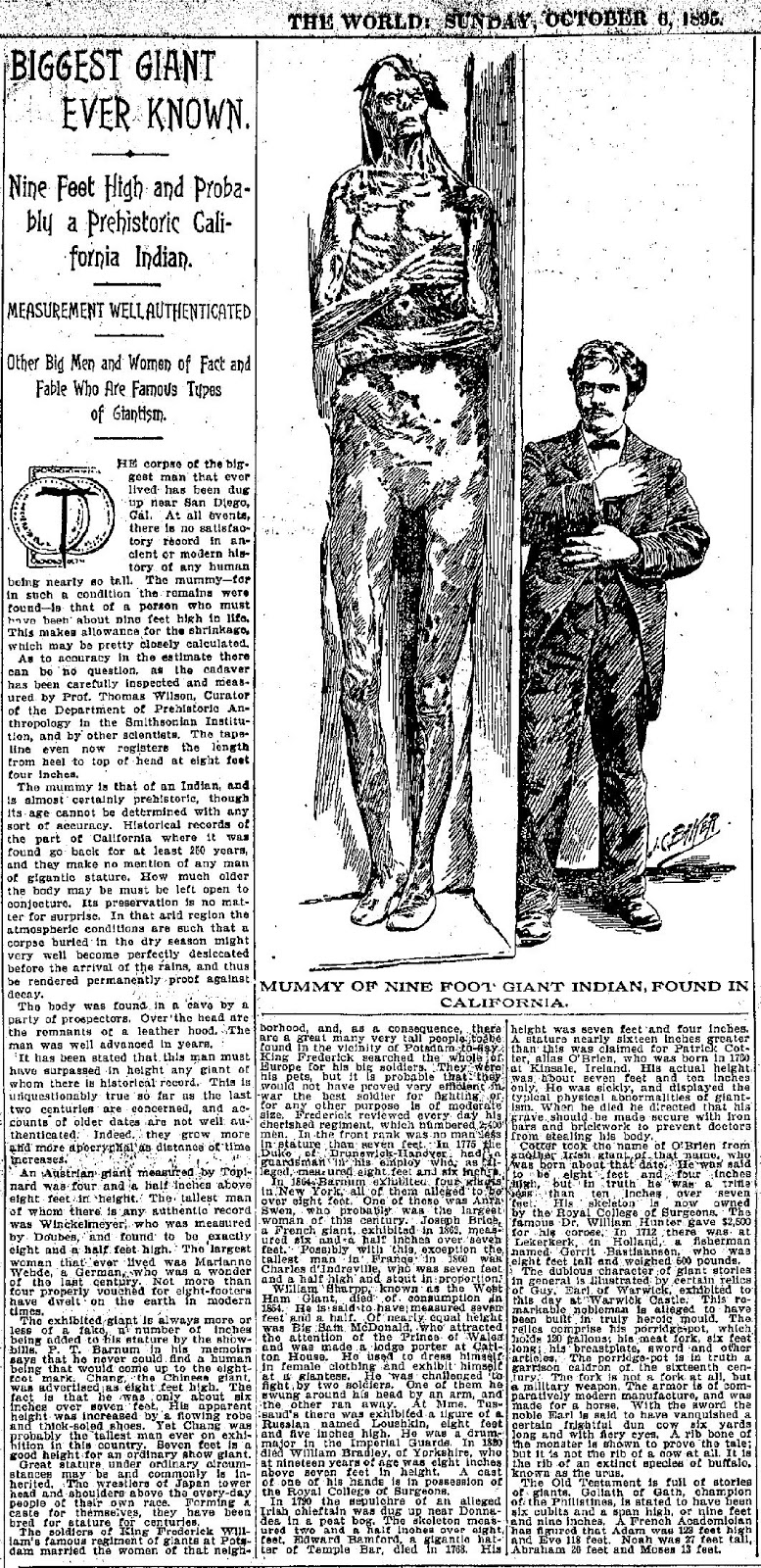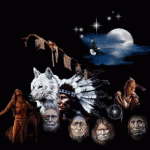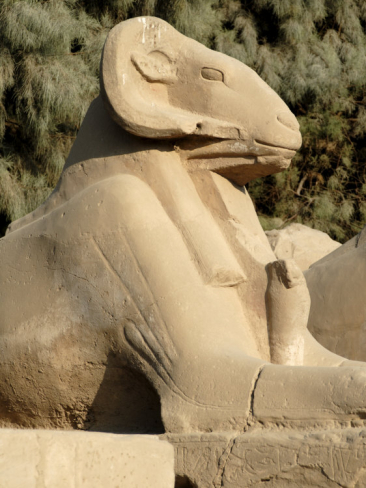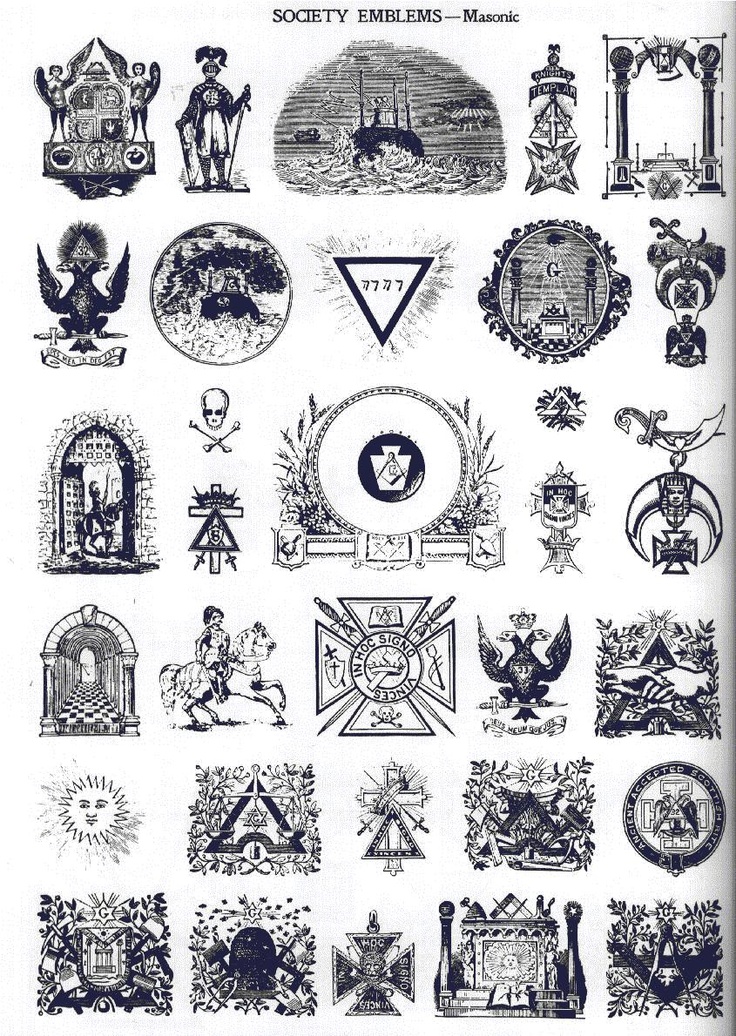The sand painting here reproduced is part of the medicine series prepared far the healing of disease. In the healing ceremony the patient is placed upon the drawing, which is made in a consecrated hogan, and all outsiders excluded. The sacred swastika in the center of the drawing is perhaps the most nearly universal of religious emblems and represents the four corners of the world. The two hunchback god, at the right and left assume their appearance by reason of the great clouds borne upon their backs. In Navaho religious art, male divinities are always shown with circular heads and female divinities with square heads.
p. 194
patterns of all forms manifesting in the earth plane, The theory of Group, or Elder, Souls having supervision over the animal species is also shared by them. The red man’s belief in guardian spirits would have warmed the heart of Paracelsus. When they attain the importance of being protectors of entire clans or tribes, these guardians are called totems. In some tribes impressive ceremonies mark the occasion when the young men are sent out into the forest to fast and pray and there remain until their guardian spirit manifests to them. Whatever creature appears thereupon becomes their peculiar genius, to whom they appeal in time of trouble.
The outstanding hero of North American Indian folklore is Hiawatha, a name which, according to Lewis Spence, signifies “he who seeks the wampum-belt.” Hiawatha enjoys the distinction of anticipating by several centuries the late Woodrow Wilson’s cherished dream of a League of Nations. Following in the footsteps of Schoolcraft, Longfellow confused the historical Hiawatha of the Iroquois with Manabozho, a mythological hero of the Algonquins and Ojibwas. Hiawatha, a chief of the Iroquois, after many reverses and disappointments, succeeded in uniting the five great nations of the Iroquois into the “League of the Five Nations.” The original purpose of the league–to abolish war by substituting councils of arbitration–was not wholly successful, but the power of the “Silver Chain” conferred upon the Iroquois a solidarity attained by no other confederacy of North American Indians. Hiawatha, however, met the same opposition which has confronted every great idealist, irrespective of time or race. The shamans turned their magic against him and, according to one legend, created an evil bird which, swooping down from heaven, tore his only daughter to pieces before his eyes. When Hiawatha, after accomplishing his mission, had sailed away in his self-propelled canoe along the path of the sunset, his people realized the true greatness of their benefactor and elevated him to the dignity of a demigod. In Longfellow’s Song of Hiawatha the poet has cast the great Indian statesman in a charming setting of magic and enchantment; yet through the maze of symbol and allegory is ever faintly visible the figure of Hiawatha the initiate–the very personification of the red man and his philosophy.
THE POPOL VUH
No other sacred book sets forth so completely as the Popol Vuh the initiatory rituals of a great school of mystical philosophy. This volume alone is sufficient to establish incontestably the philosophical excellence of the red race.
“The Red ‘Children of the Sun,'” writes James Morgan Pryse, “do not worship the One God. For them that One God is absolutely impersonal, and all the Forces emanated from that One God are personal. This is the exact reverse of the popular western conception of a personal God and impersonal working forces in nature. Decide for yourself which of these beliefs is the more philosophical. These Children of the Sun adore the Plumèd Serpent, who is the messenger of the Sun. He was the God Quetzalcoatl in Mexico, Gucumatz in Quiché; and in Peru he was called Amaru. From the latter name comes our word America. Amaruca is, literally translated, ‘Land of the Plumèd Serpent.’ The priests of this God of Peace, from their chief centre in the Cordilleras, once ruled both Americas. All the Red men who have remained true to the ancient religion are still under their sway. One of their strong centres was in Guatemala, and of their Order was the author of the book called Popol Vuh. In the Quiché tongue Gucumatz is the exact equivalent of Quetzalcoatl in the Nahuatl language; quetzal, the bird of Paradise; coatl, serpent–‘the Serpent veiled in plumes of the paradise-bird’!”

Moe is the founder of GnosticWarrior.com. He is a father, husband, author, martial arts black belt, and an expert in Gnosticism, the occult, and esotericism.

